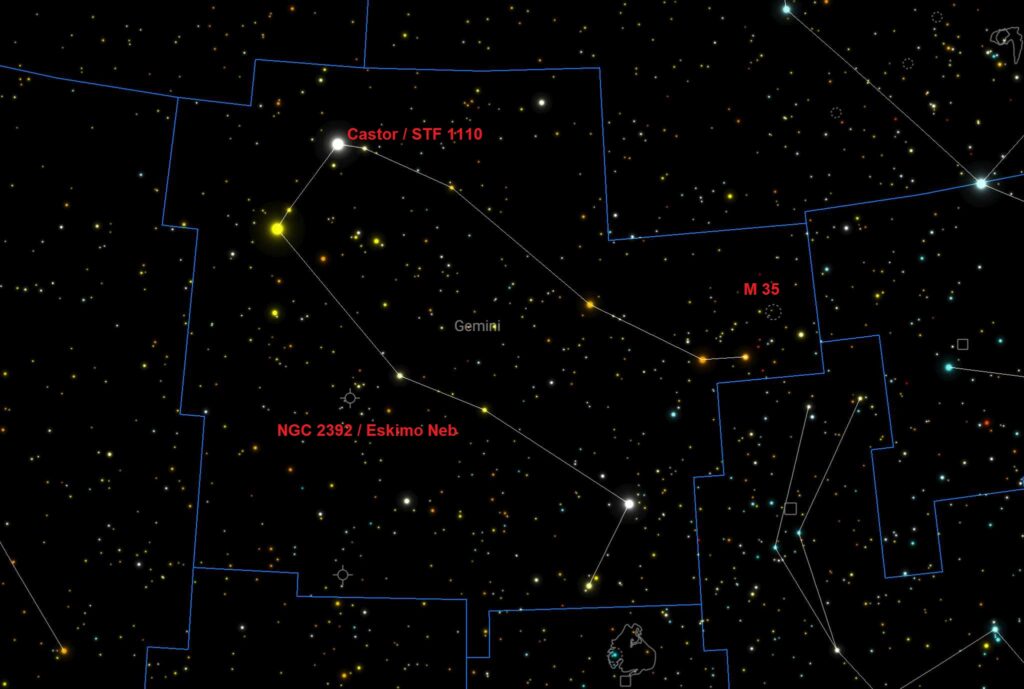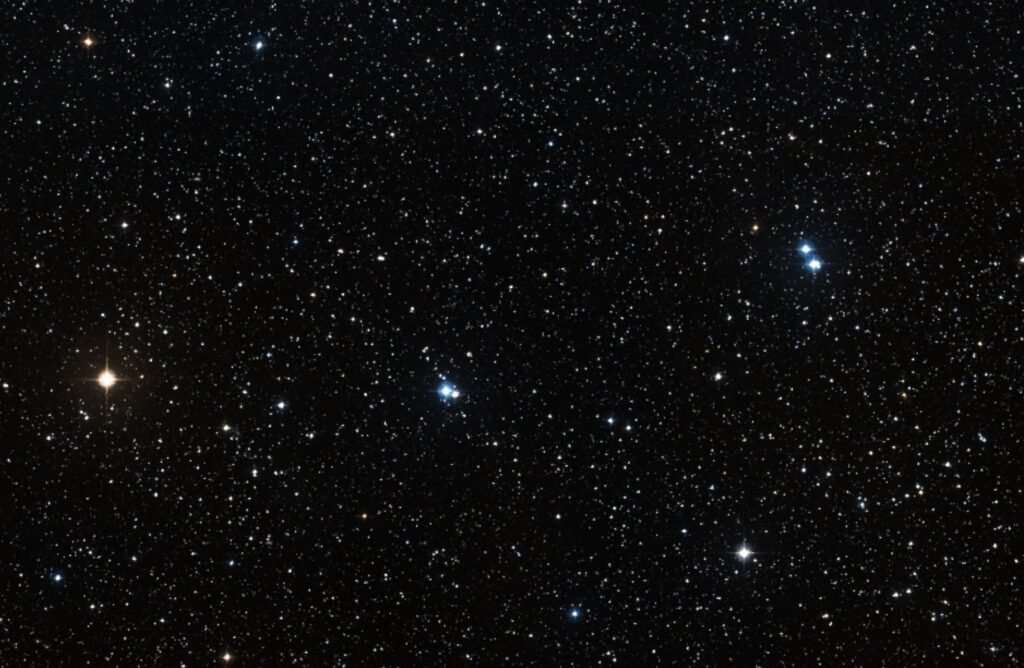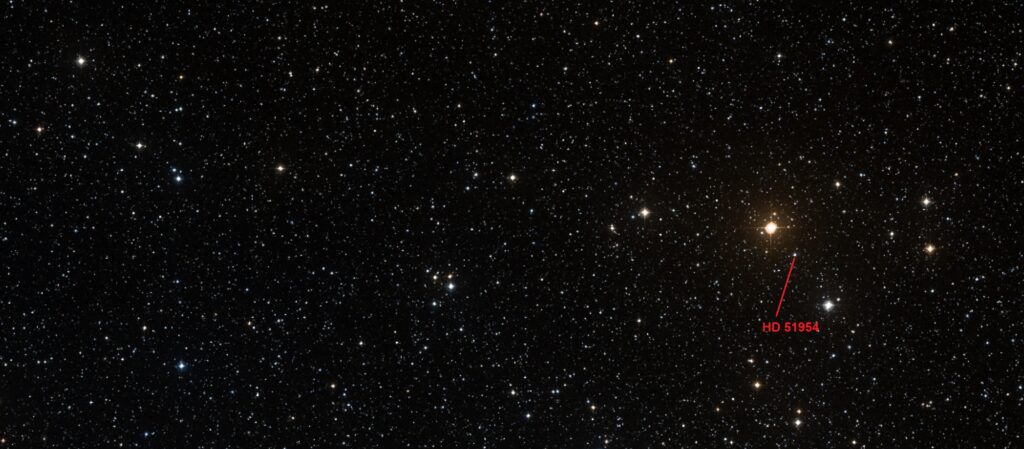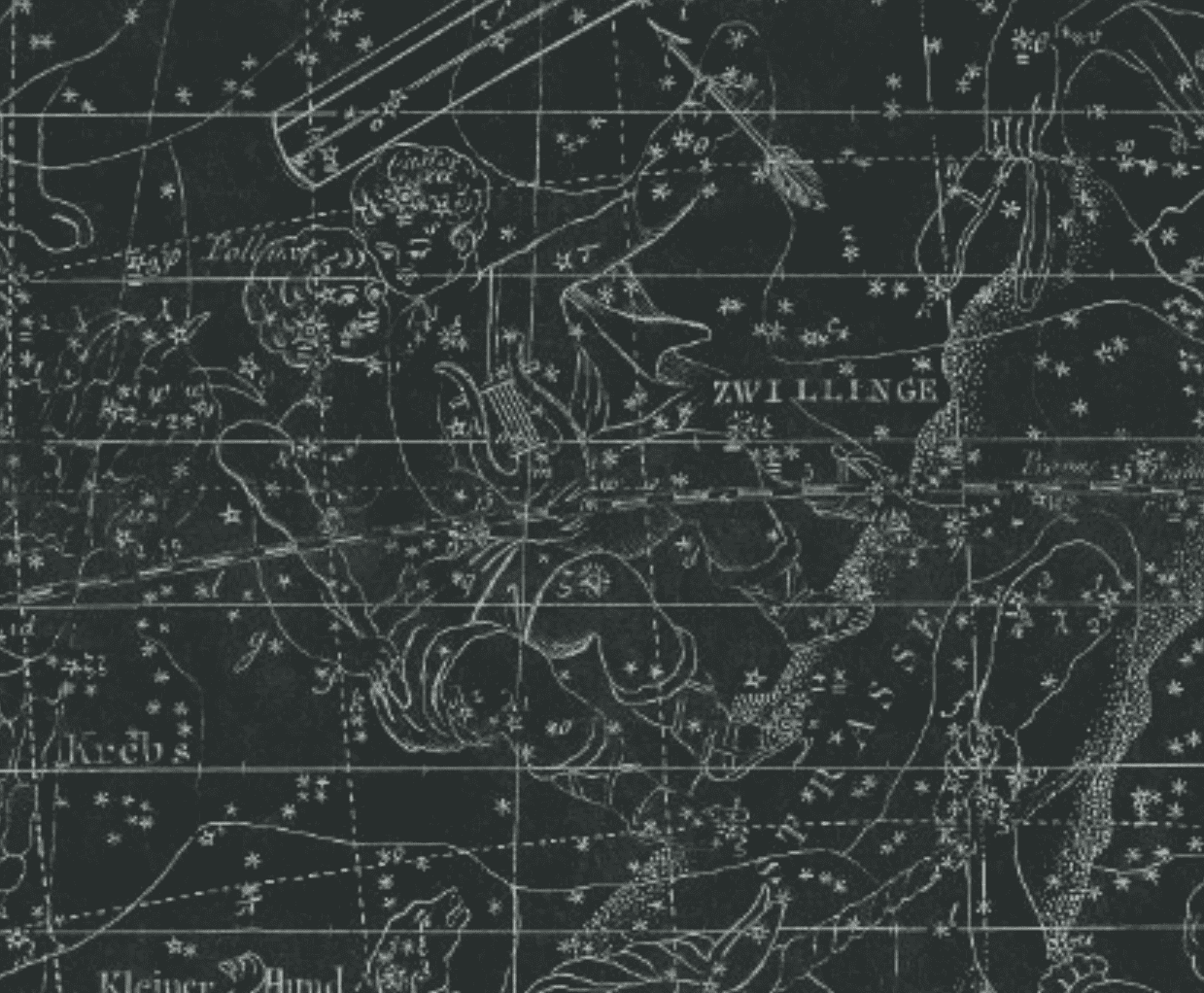The most observed object in the constellation Gemini is the rich open cluster Messier 35. Its faint companion cluster, NGC 2159, is better known to the astronomical cognoscenti than more casual observers. The excellent double star Castor, STF 1110, and the planetary nebula NGC 2392, the Eskimo, Nebula, are also well-known and often observed. But what of the rest of the constellation? It’s quite large, ranking 30th out of the 88 IAU (International Astronomical Union) designated constellations and covering 513.76 square degrees of the sky. Note: The above image is a detail of the Gemini chart in the Neuster Himmels-Atlas, published by Christian Friedrich Goldbach, Weimar, 1799. Osher Map Library and Smith Center for Cartographic Education at the University of Southern Maine.

How many observers look beyond these few highlights to explore the rich star fields of Gemini? And yet with binoculars many fine views can be easily found and enjoyed. The following chart lists objects from a ramble along the southern border of the constellation with my Oberwerk 15×70 Ultra binocular on an OB 4000 tripod.

38 Geminorum / STF 982
06h54m +13*11′
4.75/7.80 7.4″ pa 142.4*
Could see this naked eye in averted without much difficulty. Could not resolve it with the 15x70s, but it should be a fine double for a binocular telescope like the 82XL.
38 Gem is the southern point of a long string of relatively bright stars easily seen with small binoculars which form the right side of Pollux, one of the Gemini twins (the other being Castor). The next star up from 38 Gem is an excellent binocular triple.
STTA 80
06h58m +14*14′
AB 7.25/7.37 124.1″ pa 53*
AC 7.25/8.37 81.2″ pa 112*
ARN 1 AD 7.25/10.31 86.3″ pa 286
A bright, fine triple for binocular observation. I did not see the AD pair but might have been able to do so with better dark adaptation. It would certainly have been seen with a larger binocular.
The center star of the “Y” asterism just east of 38 Gem, HJ 3288, is one of the doubles I came across in Sky Safari which drew my attention to this region.

STF 1007
07h00m +12*43′
AD 7.43/7.74 67.7″ pa 28*
Evenly matched white stars. A pleasing surprise – I had not anticipated how much fun this double would be viewed with binoculars or how prominent in the field.
HJ 3288
07h02m +12*35′
7.29/8.67 39.9″ pa 38.5*
Bright white primary with a dusty yellow secondary. An excellent double star with the 15×70 that should be observable with 10x instruments.
Further to the east is an extraordinary set of multiple stars forming a triangle above the Medusa Nebula, which is much too faint to be seen with binoculars from a suburban yard. It might be glimpsed with a binocular telescope from a truly dark site, but is more in the realm of large aperture telescopes or astro-imagers. The multiple stars in the image, from right to left (west to east) are STF 1088, STTA 86 (the second double that caught my attention on the southern edge of Gemini), and STF 1102.

STF 1088
07h26m +14*06′
AB 7.38/9.37 10.9″ pa 195*
AC 7.38/8.71 112.8″ pa 238*
Actually a septuple (7 star) system. With the 15×70 Ultra I saw the AC pair. If I had known about the AB pair I might have been able to tweak it out, but a more likely subject for the 82 or 100XL binocular telescopes.
STTA 86
07h29m +14*21′
7.17/8.24 55.6″ 349*
A fine binocular double star for moderately sized binoculars. Attractive with the 15×70 but should be easily seen in 10x binoculars.
STF 1102
07h30m +13*52′
AB 7.36/9.21 7.7″ pa 45*
AD 7.36/8.04 111.9″ pa 131*
Another multiple star system, a sextuple (5 stars), I saw the AD pair. The AB could not be seen with the 15×70, but should be easily seen with the 82 or 100XL. Remarkable to have two such multiple star systems in a small asterism.
And here is a fine asterism including the beautiful orange star, 41 Geminorum. Honestly just one of the charming asterisms spread across the southern side of Gemini. The 10.12 star HD 51954 annotated in this image is the faintest star I was able to see with the 15×70 Ultra from my suburban yard during this observation session (18 April 2022).


